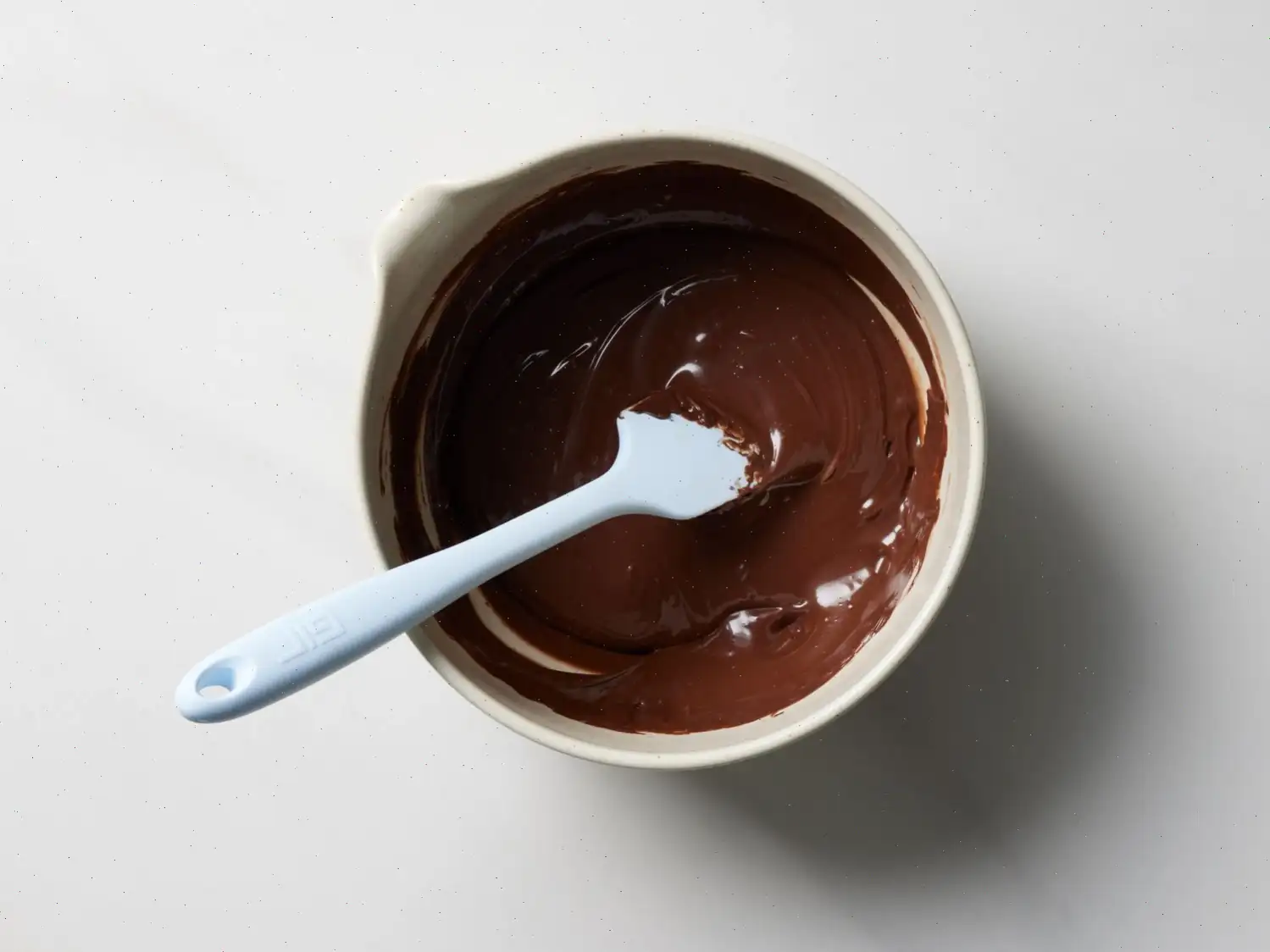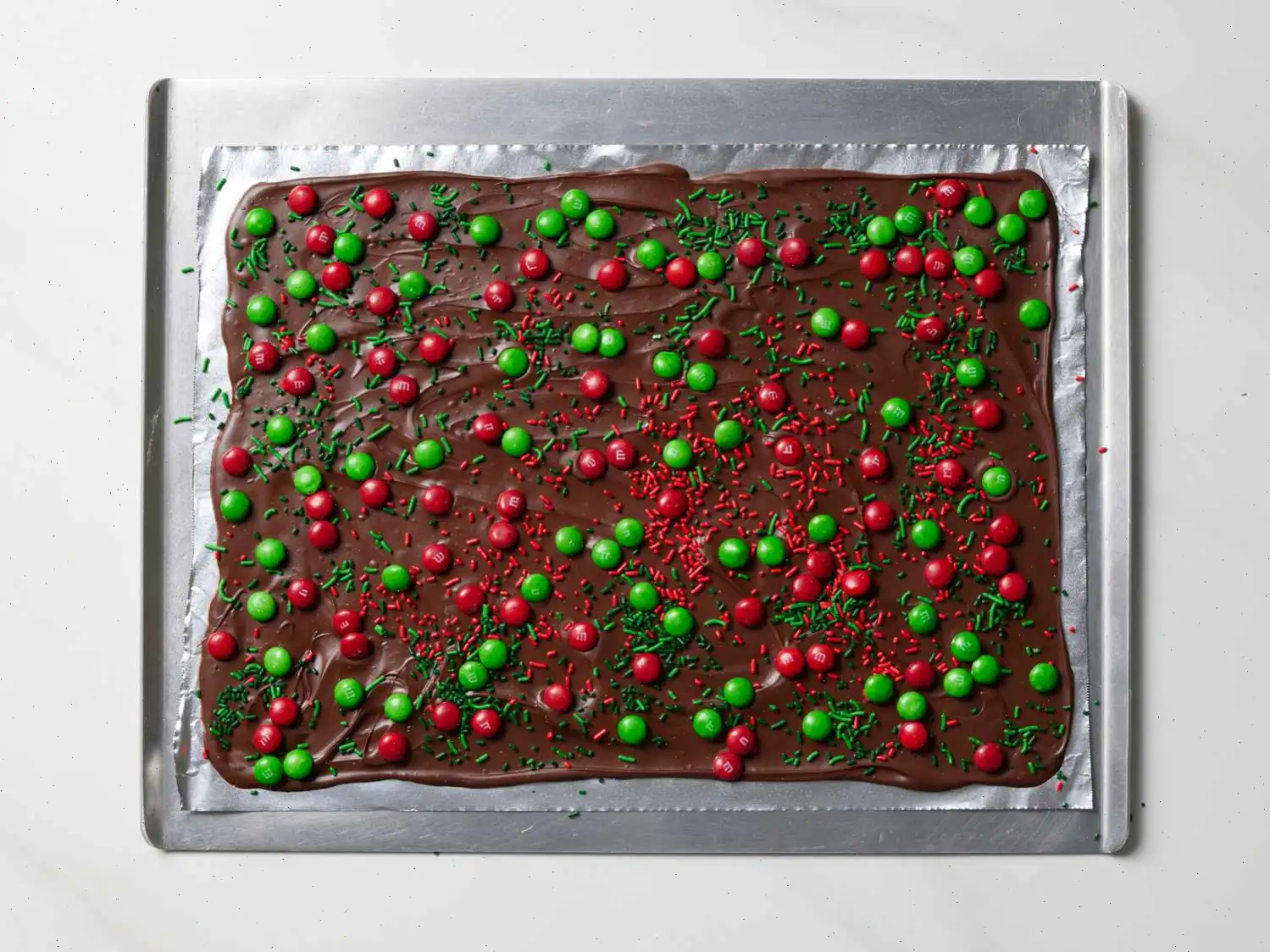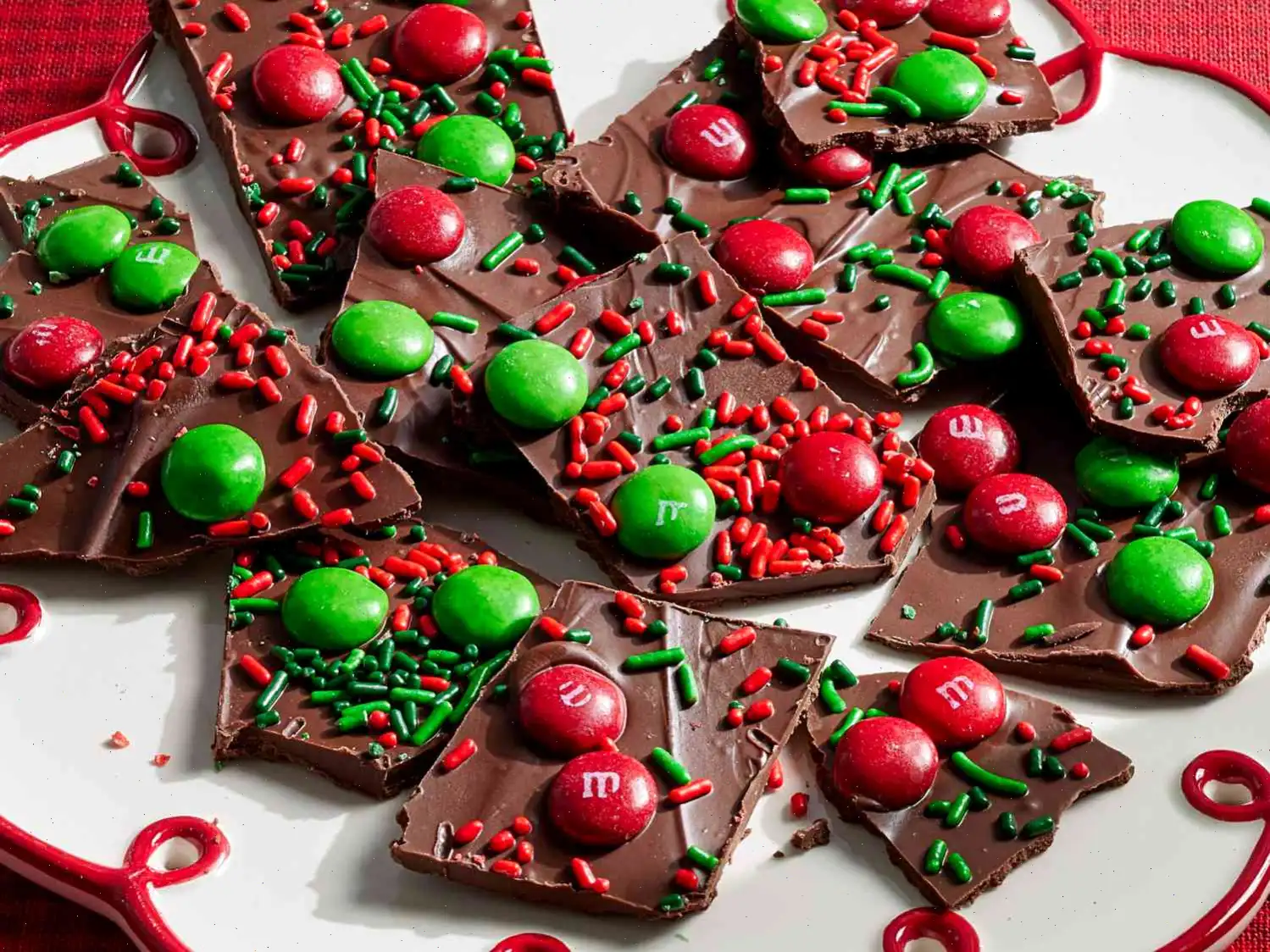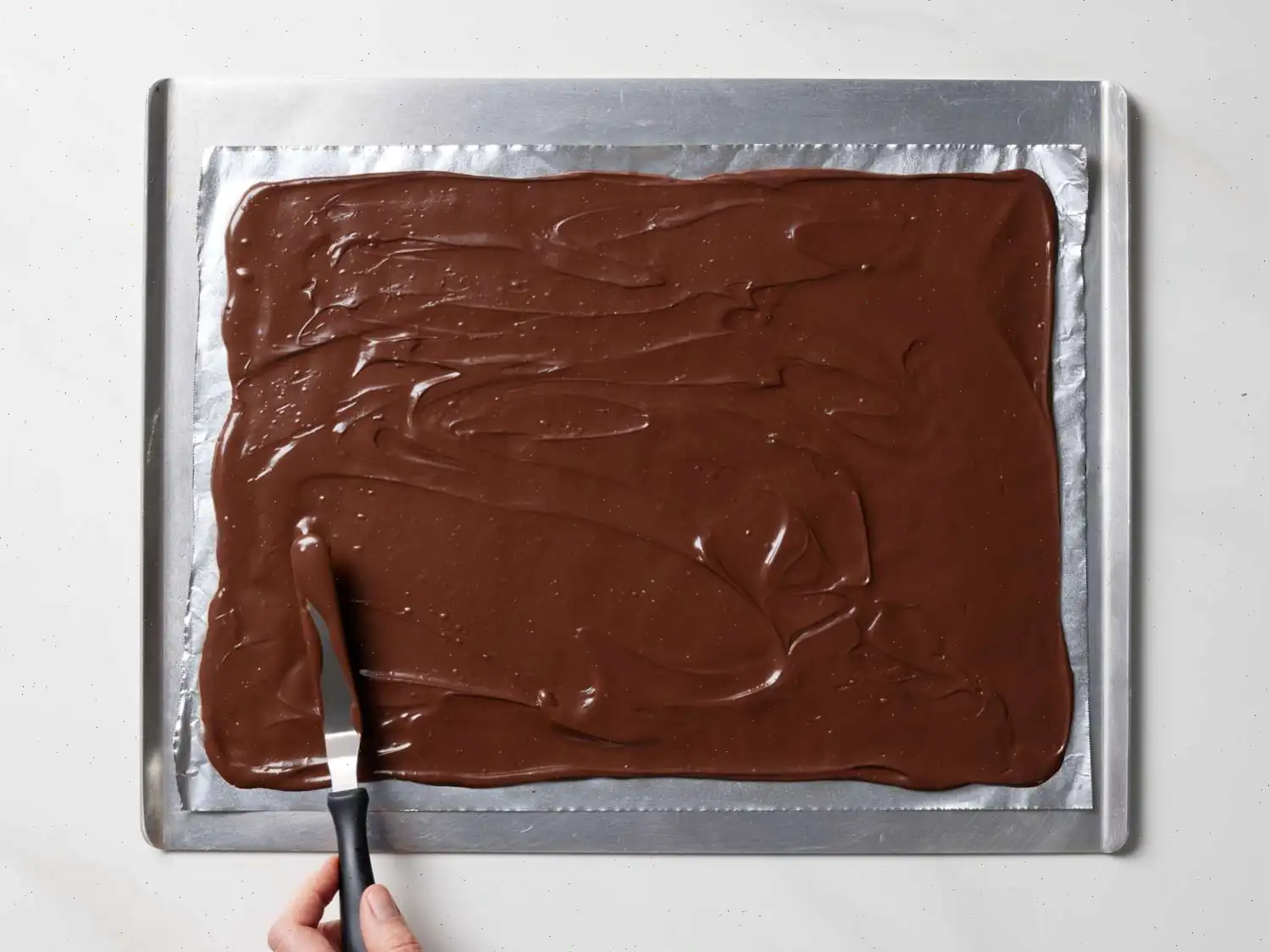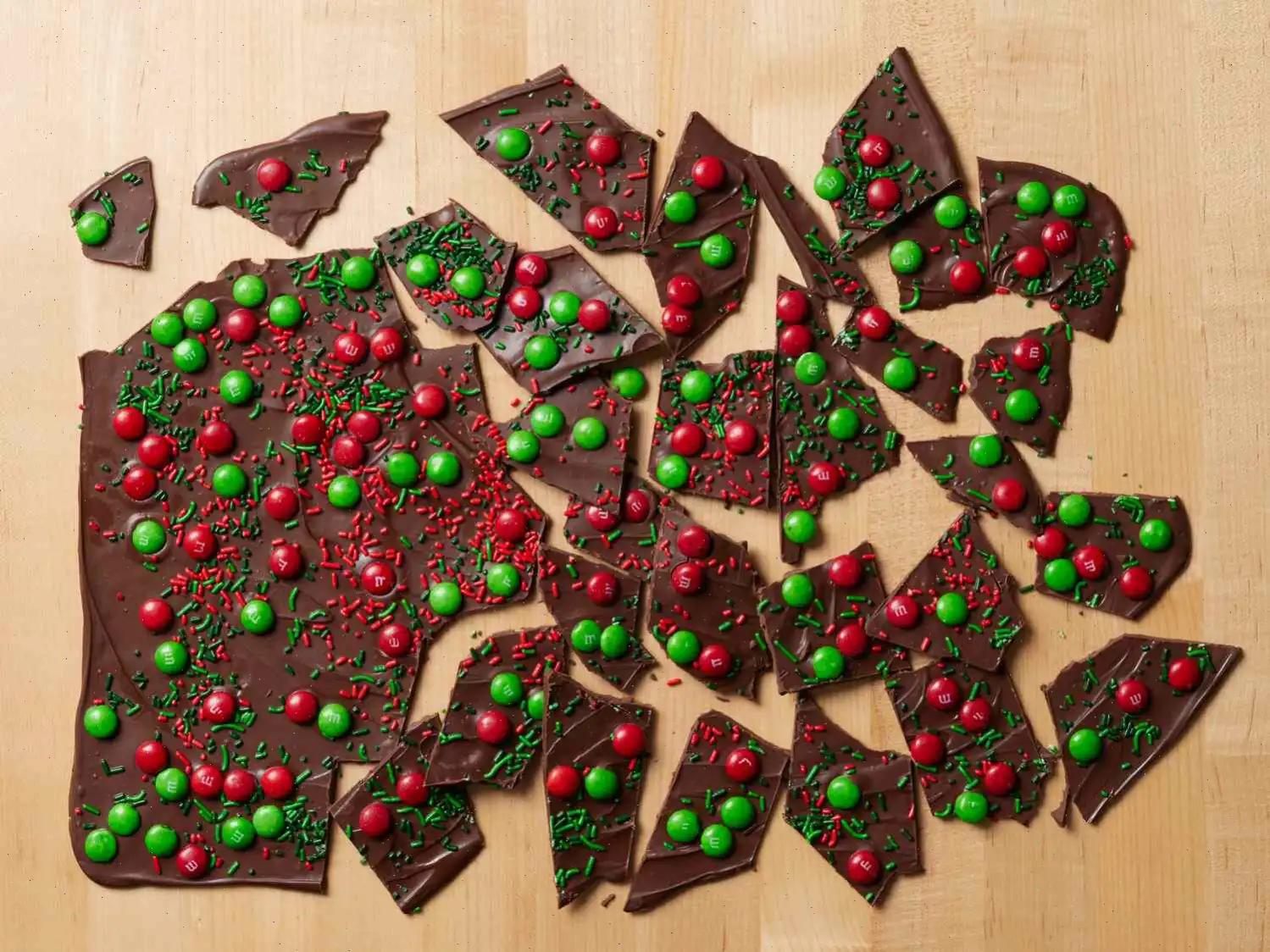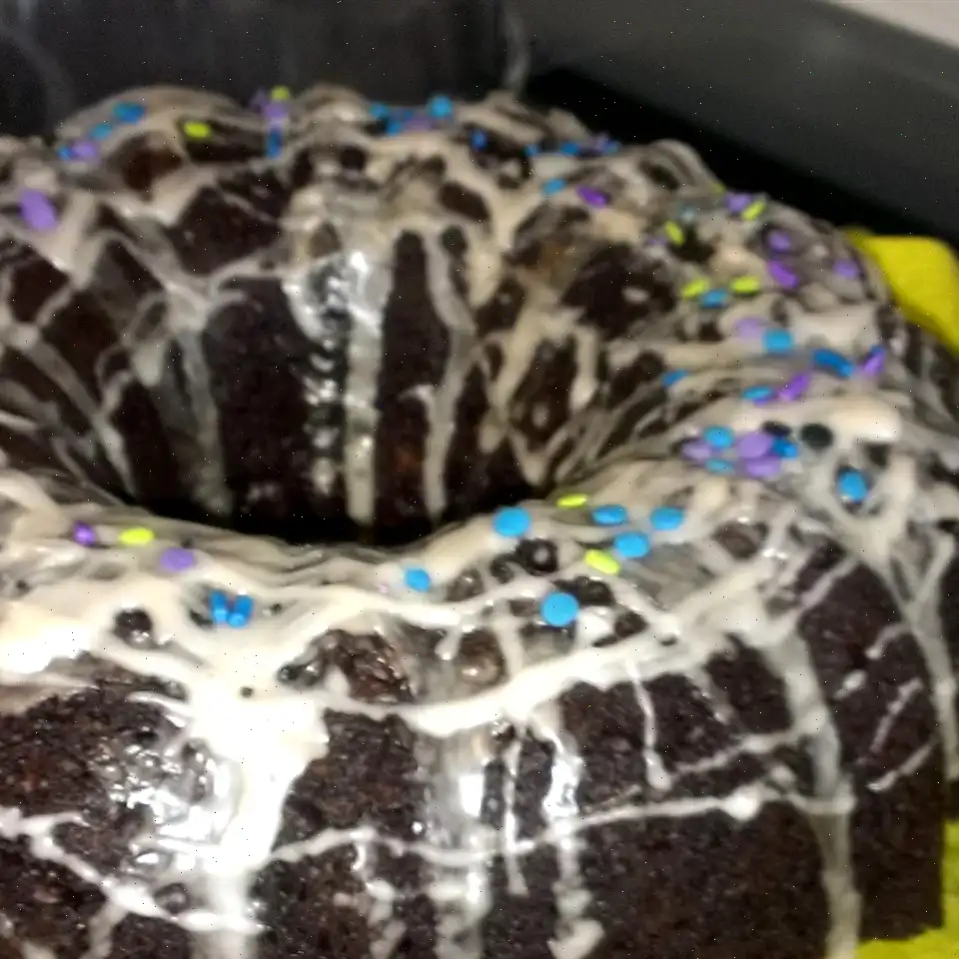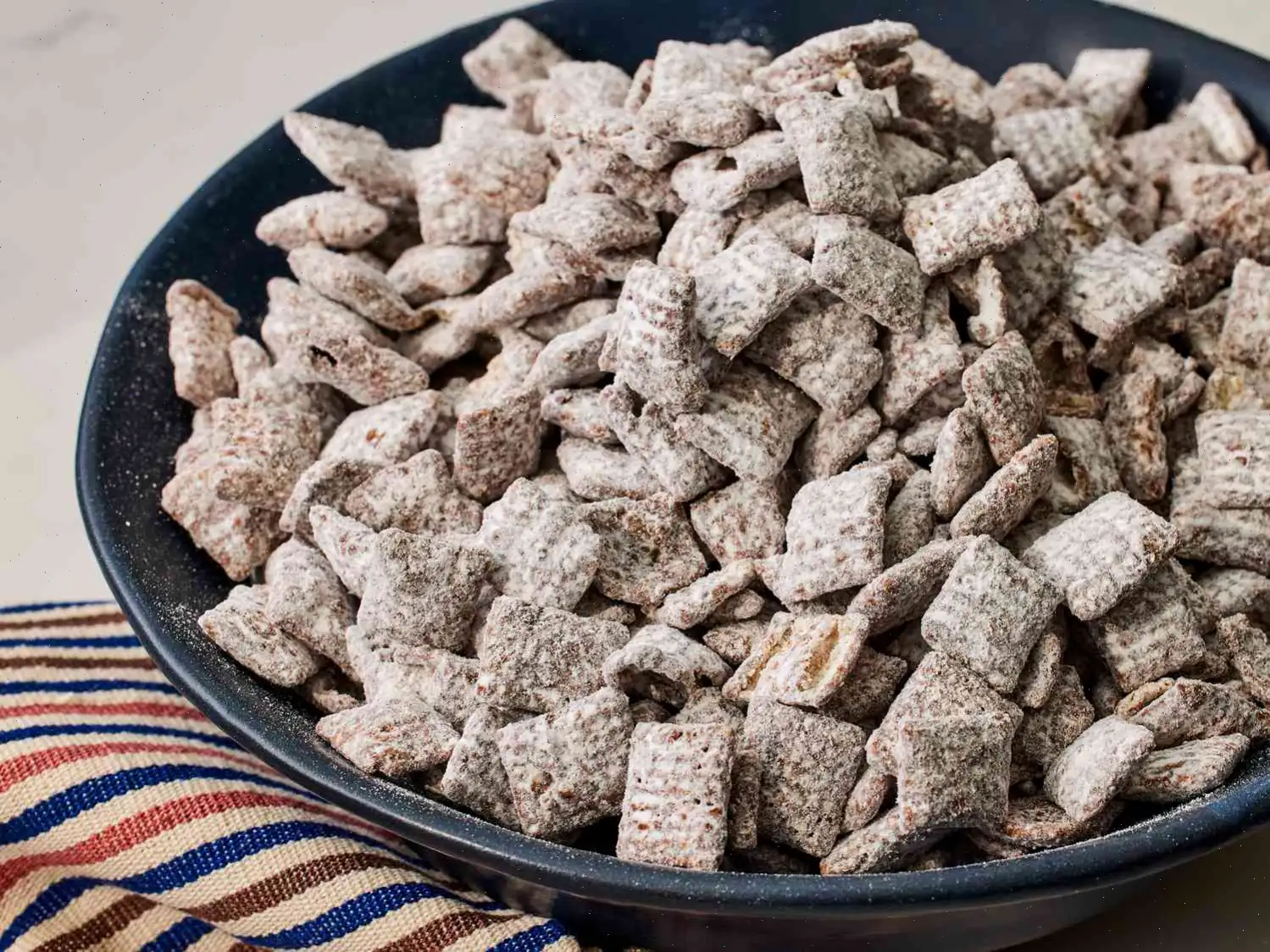
Christmas Bark Recipe
Ingredients
- Cooking spray
- 8 ounces chocolate or vanilla flavored candy coating (almond bark), chopped
- 8 ounces milk, semisweet, or dark chocolate, chopped, or white baking chips
- 1 tablespoon shortening
- 1/3 cup red and green candy-coated chocolate pieces (such as M&M's)
- 1 tablespoon red and/or green sprinkles
Directions
Step 1: Gather all ingredients.
Step 2: Line a large baking sheet with heavy foil and grease it with cooking spray.
Step 3: In a large microwave-safe bowl, combine candy coating, chocolate, and shortening.
Step 4: Microwave the mixture on High until melted, stirring every 30 seconds. It should take about 1 1/2 to 2 minutes.
Step 5: Pour the melted mixture onto the prepared baking sheet and spread it evenly to a thickness of 1/4 inch.
Step 6: Sprinkle the candy-coated chocolate pieces and sprinkles on top of the chocolate mixture.
Step 7: Chill the chocolate bark until firm, approximately 30 minutes.
Step 8: Once firm, break the candy into pieces and serve.
Variations
Mint Chocolate
Step 1: Using vanilla candy coating, melt 4 ounces of the coating with 4 ounces of milk chocolate chips and 1/2 tablespoon of shortening.
Step 2: Melt the remaining 4 ounces of candy coating with 4 ounces of white baking chips and the remaining 1/2 tablespoon of shortening.
Step 3: Stir in 1/4 teaspoon of peppermint extract and add green gel food coloring to tint the mixture.
Step 4: Drop alternating spoonfuls of the chocolate and mint mixtures onto the prepared baking sheet.
Step 5: Using a narrow spatula, swirl the mixtures together.
Step 6: Gently shake the baking sheet back and forth to spread the mixture to a thickness of 1/4 inch.
Step 7: Sprinkle with 1/4 cup chopped chocolate-mint candies and chill as directed.
Salted Caramel Pretzel
Step 1: Prepare and spread the chocolate mixture as directed above.
Step 2: Microwave 10 unwrapped vanilla caramels (2.8 ounces) and 1 teaspoon of milk in a bowl until melted, stirring every 30 seconds (about 1 to 2 minutes).
Step 3: Drizzle the melted caramels over the chocolate mixture.
Step 4: Sprinkle with 1/3 cup broken pretzels and 1/4 teaspoon flaky sea salt.
Step 5: Chill as directed.
Nutrition Facts (per serving)
| Calories | 144 |
|---|---|
| Total Fat | 8g (10% Daily Value) |
| Saturated Fat | 5g (23% Daily Value) |
| Cholesterol | 5mg (2% Daily Value) |
| Sodium | 21mg (1% Daily Value) |
| Total Carbohydrates | 17g (6% Daily Value) |
| Dietary Fiber | 0g (2% Daily Value) |
| Total Sugars | 15g |
| Protein | 2g (3% Daily Value) |
| Calcium | 45mg (3% Daily Value) |
| Iron | 0mg (2% Daily Value) |
| Potassium | 76mg (2% Daily Value) |
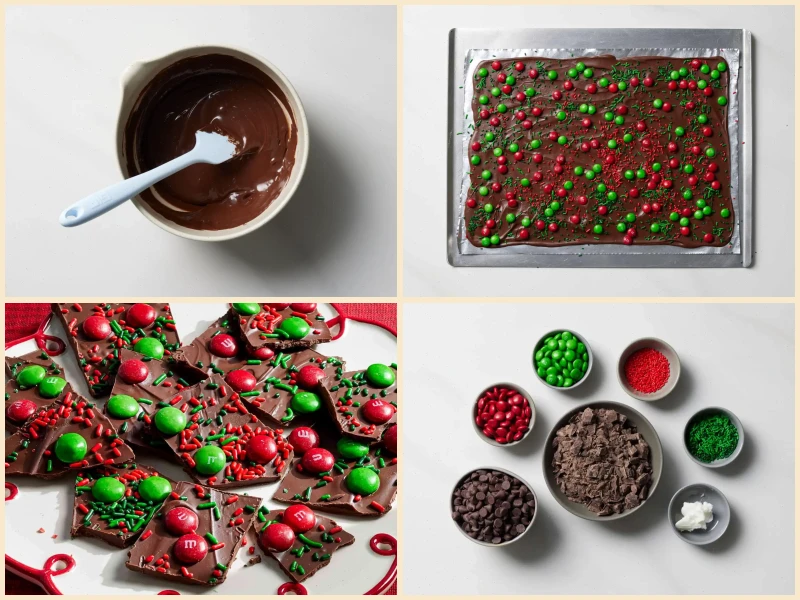
The Fascinating Story of Christmas Bark
Christmas bark, a festive and colorful treat, has roots in the broader tradition of chocolate confections popularized in North America during the 20th century. Its creation is closely tied to the concept of easy-to-make holiday sweets that combine visual appeal with simple ingredients. Originally, candy makers sought a way to produce a visually striking dessert that could be shared during Christmas gatherings, and layering chocolate with candies became a practical solution. The name bark comes from its broken, rustic pieces that resemble tree bark, giving it a natural yet celebratory look.
Regional Characteristics
While Christmas bark is widely recognized in the United States, regional variations exist. In the Midwest, red and green candies or peppermint pieces are favored, reflecting traditional holiday colors. Coastal regions sometimes incorporate local nuts or dried fruits, adding a personalized twist. European versions, particularly in Germany and Austria, often emphasize marbled chocolate with almond slivers and are presented in more structured, decorative patterns. Despite these variations, the core idea of layering chocolate and toppings remains consistent across regions.
How It Differs from Similar Desserts
Christmas bark stands out from other chocolate confections due to its simplicity and flexibility. Unlike chocolate fudge or truffles, it does not require cooking or tempering, making it accessible for home cooks. Unlike candy cane bark or peppermint bark, which focus solely on mint flavors, Christmas bark allows for creative combinations including caramel, pretzels, or layered chocolate. Its broken, uneven appearance differentiates it visually from molded chocolates and adds a rustic charm that is a hallmark of the dessert.
Where Its Typically Served
Christmas bark is most commonly served at holiday gatherings, from family parties to office exchanges. It is popular as a homemade gift, often packaged in clear cellophane or festive tins. Bakeries also display it during the Christmas season due to its colorful, eye-catching presentation. It pairs well with hot beverages like cocoa or coffee and is a versatile treat for dessert tables, stocking stuffers, or festive platters.
Interesting Facts
- The earliest references to chocolate bark in print appeared in mid-20th-century American cookbooks.
- Its popularity soared during the 1980s with the rise of holiday-themed candy coatings and colorful chocolate pieces.
- Modern variations often incorporate unexpected ingredients like salted caramel, pretzels, or nuts, showing its adaptability.
- Despite its festive appearance, it is one of the simplest chocolate confections to prepare at home, often taking less than an hour from start to finish.
- Its name reflects both the visual texture and the tradition of breaking chocolate into pieces, a playful and interactive aspect of serving.


